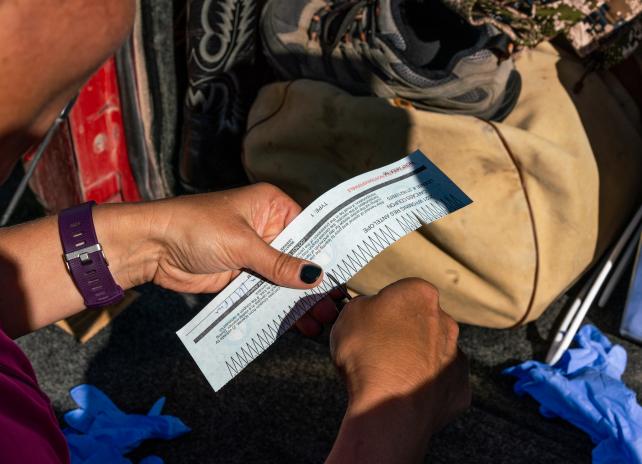
Commissioner and Governor’s License Information
Access information to learn about the Commissioner and Governor’s License below.
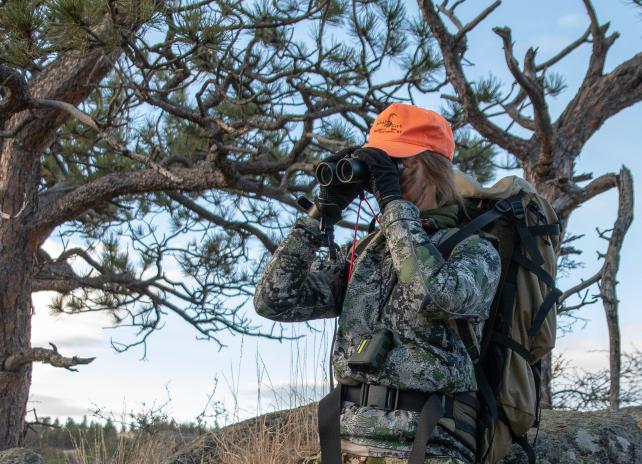
Commissioner License Authorizations
Each appointed commissioner may cause to be issued at cost not more than a total of eight (8) elk, deer, or antelope designated licenses per year.
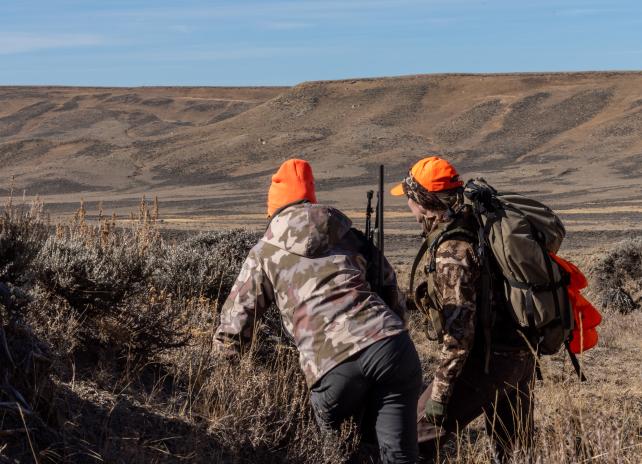
Governor’s Licenses
At the request of the governor, the commission shall annually issue up to twenty five (25) complimentary hunting and (25) complimentary fishing licenses. Not more than five (5) bighorn sheep, five (5) moose and five (5) wild bison licenses shall be issued in one calendar year.
Commissioner Complimentary Licenses
Chapter 44, Section 12
Wyoming statutes provide that each appointed commissioner may cause, through the issuance of license authorizations to nonprofit charitable organizations, to be issued at full price, complimentary elk, deer, or antelope licenses. All big game licenses authorized under this section are valid for a specific region or hunt area as designated by the license holder at the time of application. Holders of Commissioner Complimentary licenses shall be exempt from the provisions in this Chapter limiting the number of licenses an individual can possess in any one calendar year. As a condition to issuance of a Commissioner Complimentary license, the Department shall require an authorized officer of the recipient organization to certify under penalty of law that the respective organization is a non-profit, charitable organization as defined in this regulation and eligible to receive the Commissioner Complimentary license authorization.
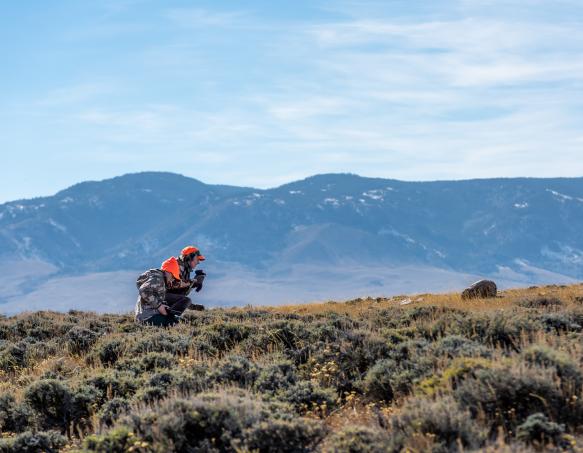
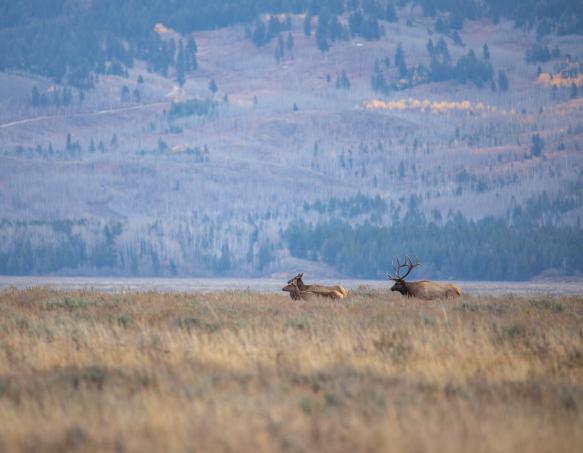
Wyoming Governor's Big Game License Coalition
Application
The 2026 application period:
December 1, 2025 - January 31, 2026
All applications (and attachments) need to be submitted via email to wgf-wgbglcgrants@wyo.gov.
Coalition Partners
Mule Deer Foundation
Muley Fanatics Foundation
Rocky Mountain Elk Foundation
Wyoming Wild Sheep Foundation
Members
Mule Deer Foundation
Muley Fanatics Foundation
Rocky Mountain Elk Foundation
Wyoming Wild Sheep Foundation
Wyoming Game and Fish Department
Wyoming Wildlife Federation
Audubon Rockies
Wyoming Governor’s Big Game License Coalition
There are 5 priority areas of funding for the wyoming governor’s big game license coalition grants. Read about each category below to make sure your application aligns with the goals of the specified category you are applying for.
Priority funding for projects that have a clear benefit for elk and elk habitats, and that include but are not limited to the following:
- Habitat enhancement (prescribed burning, conifer thinning, weed treatment, fencing, seeding and restoration, mechanical treatments, etc.);
- Land protection (conservation easements, land acquisitions, migration corridor enhancement and protection); Land access (hunting access to facilitate proper elk management);
- Elk research (collar studies to elucidate migration corridors, seasonal habitat selection, general elk ecology, disease epidemiology, or to improve elk management);
- Education and outreach (publications to promote conservation, signage, interpretive displays, etc.).
The elk committee typically receives numerous project funding requests that, when combined, far exceed available annual funding. Approved individual project funding amounts vary but generally range from $2,500 to $10,000 dollars. Project funding derived from the wgbglc elk account is often a small but important component of larger projects. Elk account funds are generally leveraged at a five to one ratio, maximizing the benefit from the fund’s expenditures. Requests falling into one or more of the categories outlined above, containing well-written narratives and evidence of strong partnerships have the best chance of funding.
The mule deer committee is comprised of membership from two ngos (the mule deer foundation and muley fanatic foundation) and two members of the wyoming game and fish department. The committee reviews project proposals annually and has historically funded projects that fall into the following categories:
Conservation easements;
- Habitat improvement (rx fire, weed treatments, reseeding, mowing, aspen work, etc.);
- Fence removal or conversion to wildlife friendly specifications;
- Research resulting in further understanding of mule deer management questions.
Given the long-term nature of conservation easements in protecting important mule deer habitats these projects are often ranked near the top. Habitat projects designed to improve early seral habitats are well received and habitat treatment in documented mule deer transitional range is a preferred strategy. Reducing barriers to movement through fence removal or wildlife friendly retrofitting is a common and well supported project type. Research intended to address relevant management questions is generally looked upon favorably. As a general rule, projects benefitting multi-species are scored higher than single-species projects.
The mule deer committee typically receives numerous project funding requests that, when combined, far exceed available annual funding. Approved individual project funding amounts vary but generally range from $5,000 to $10,000 dollars. Project funding derived from the wgbglc mule deer account is often a small but important component of larger projects. Mule deer account funds are generally leveraged at a five to one ratio, maximizing the benefit from the fund’s expenditures. Requests falling into one or more of the categories outlined above, containing well-written narratives and evidence of strong partnerships have the best chance of funding.
The wgbglc bighorn sheep committee is committed to restoring, enhancing, and maintaining bighorn sheep populations in wyoming by considering any appropriate and beneficial project proposals. Primarily the committee is interested in projects focused on bighorn sheep that address issues and opportunities associated with habitat, diseases, conservation education, trapping/transplants, creating separation between domestic sheep/domestic goats/wild mountain goats and bighorn sheep, research, management/population monitoring, and migration/vehicle collisions. Project proposal requests containing well-written narratives and evidence of strong partnerships have the best chance of funding.
The wgbglc moose committee is committed to supporting projects that have a clear benefit for moose, moose habitats, and similar wildlife species. Projects funded in the past have focused on habitat inventory and management, research, population management, and education, in that order. Projects likely to receive consideration for funding include but are not limited to the following:
- Population management;
- Moose research – focus on factors driving vital rates, population survey techniques, habitat selection and use, movement/migration routes, and general moose ecology;
- Habitat inventory/enhancement;
- Land protection (primarily through conservation easements);
- Education and outreach.
The moose committee typically receives numerous project funding requests that, when combined, may exceed available annual funding. Approved individual project funding amounts vary but generally range from $5,000 to $20,000 dollars. Project funding derived from the wgbglc moose account is often a small but important component of larger projects. Moose account funds are generally leveraged at up to a five to one ratio, maximizing the benefit from the fund’s expenditures. Well-written proposals, falling into one or more of the categories outlined above, and demonstrating evidence of strong partnerships, have the best chance of funding.
The wgbglc all wildlife committee considers projects that benefit any fish and wildlife species other than bighorn sheep, mule deer, elk, and moose. However, the committee will consider proposals for projects targeting those species if additional benefits to other species or their habitats are clearly articulated. Although the all wildlife fund is the primary wgbglc funding source for projects focusing on pronghorn and state wildlife action plan (swap) priorities, the committee has chosen not to identify specific project or species priorities when accepting proposals. The committee has funded projects that focus on research, monitoring, species or habitat restoration, equipment purchases, public outreach and education, and conservation easements, but retains the flexibility to entertain other requests. Project funding derived from the wgbglc all wildlife fund sometimes accounts for a small, but important, component of larger projects and is often leveraged to obtain additional matching funds. Funding awards from the all wildlife committee are generally less than $20,000. Project proposals containing well-written narratives, clear and concise budgets, evidence of strong partnerships, and well-defined objectives and timelines for project completion have the best chance of funding. Swap implementation projects should note the species of greatest conservation need most likely to benefit from the project and any relevant priorities identified in the swap that will be addressed.
